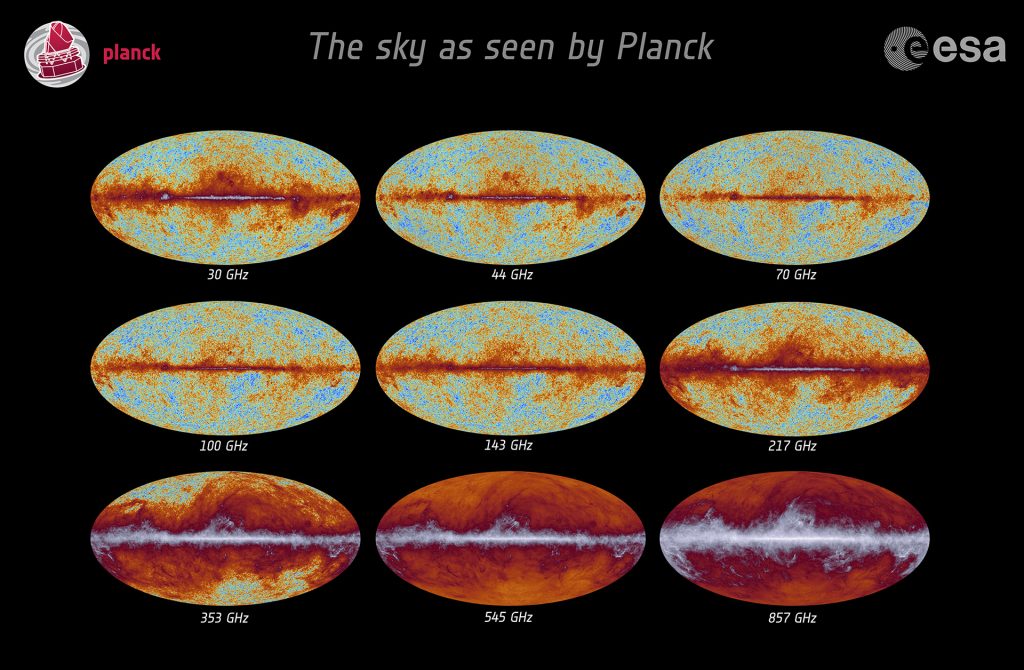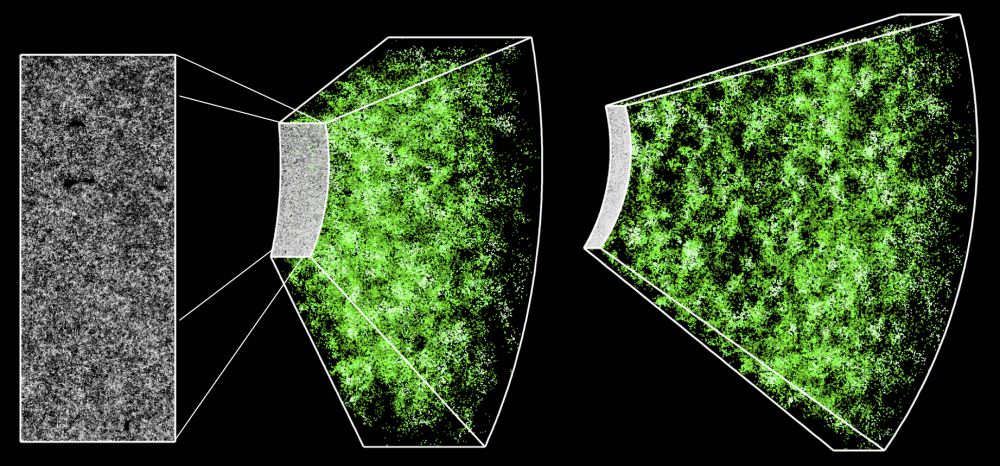Unexpectedly, The Universe Is Getting Hotter And Hotter as It Expands
For nearly a century, astronomers have understood that the Universe is in a state of enlargement. Because the 1990s, they’ve come to know that as of four billion years in the past, the speed of enlargement has been rushing up.
As this progresses, and the galaxy clusters and filaments of the Universe transfer farther aside, scientists theorize that the imply temperature of the Universe will steadily decline.
However based on new analysis led by the Heart for Cosmology and AstroParticle Physics (CCAPP) at Ohio State College, it seems that the Universe is definitely getting hotter as time goes on.
After probing the thermal historical past of the Universe over the past 10 billion years, the group concluded that the imply temperature of cosmic fuel has elevated greater than 10 instances and reached about 2.2 million Ok (~2.2 °C; four million °F) as we speak.
The examine that describes their findings, “The Cosmic Thermal Historical past Probed by Sunyaev–Zeldovich Impact Tomography“, just lately appeared in The Astrophysical Journal.
The examine was led by Yi-Kuan Chiang, a analysis fellow on the CCAP, and included members from the Kavli Institute for the Physics and Arithmetic of the Universe (Kavli IPMU), The Johns Hopkins College, and the Max-Planck-Institute for Astrophysics.
For the sake of their examine, the the group examined thermal information on the Giant-Scale Construction (LSS) of the Universe. This refers to patterns of galaxies and matter on the biggest of cosmic scales, which is the results of the gravitational collapse of darkish matter and fuel.
As Dr Chiang defined in an Ohio State Information launch:
“Our new measurement supplies a direct affirmation of the seminal work by Jim Peebles – the 2019 Nobel Laureate in Physics – who laid out the speculation of how the large-scale construction varieties within the Universe. Because the Universe evolves, gravity pulls darkish matter and fuel in area collectively into galaxies and clusters of galaxies. The drag is violent – so violent that an increasing number of fuel is shocked and heated up.”
To measure thermal modifications over the previous 10 billion years, Chiang and his colleagues mixed information from by the ESA’s Planck Infrared Astronomical Satellite tv for pc and the Sloan Digital Sky Survey (SDSS). Whereas Planck was the primary European mission to measure the temperature of the Cosmic Microwave Background (CMB), SDSS is a an enormous multi-spectral survey that has created probably the most detailed 3D maps of the Universe.
 All-sky information displaying the completely different wavelenghts. (ESA)
All-sky information displaying the completely different wavelenghts. (ESA)
From these information units, the group cross-correlated eight of Planck’s sky depth maps with 2 million spectroscopic redshift references from the SDSS. Combing redshift measurements (that are routinely used to find out how briskly are objects are transferring away from us) and temperature estimates based mostly on gentle, the group in contrast the temperature of extra distant fuel clouds (farther again in time) with these nearer to Earth.
From this, the analysis group was in a position to affirm that the imply temperature of gases within the early Universe (circa four billion after the Massive Bang) was decrease than it’s now. That is apparently because of the gravitational collapse of the cosmic construction over time, a pattern which is able to proceed and develop into extra intense because the enlargement of the Universe continues to speed up.
As Chiang summarized, the Universe is warming due to the pure strategy of galaxy and construction formation, and is unrelated to temperature modifications right here on Earth:
“Because the Universe evolves, gravity pulls darkish matter and fuel in area collectively into galaxies and clusters of galaxies. The drag is violent — so violent that an increasing number of fuel is shocked and heated up… These phenomena are occurring on very completely different scales. They don’t seem to be in any respect linked.”
Previously, many astronomers have argued that the cosmos would proceed to chill because it expanded, one thing that will inevitably end result within the the “Massive Chill” (or “Massive Freeze”). In distinction, Chiang and his associates confirmed that scientists can clock the evolution of cosmic construction formation by “checking the temperature” of the Universe.
 (Jeremy Tinker/SDSS-III)
(Jeremy Tinker/SDSS-III)
IMAGE: A piece of the 3D map constructed by BOSS. The rectangle on the far left reveals a cutout of 1000 sq. levels within the sky containing almost 120,000 galaxies, or roughly 10 p.c of the overall survey.
These findings might even have implications for theories that settle for “cosmic cooling” as a foregone conclusion. On the one hand, it has been steered potential decision to the Fermi Paradox is that extraterrestrial intelligences (ETIs) are dormant and ready for the Universe to enhance (the Aestivation Speculation).
Primarily based partially on the thermodynamics of computing (the Landauer’s Precept), the argument states that because the Universe cools, superior species would have the ability to get way more out of their megastructures. Additionally, if the cosmos goes to get hotter over time, does that imply that the emergence of life will develop into much less seemingly over time on account of elevated cosmic radiation?
Assuming there isn’t any mechanism for sustaining a sure thermal equilibrium, would this imply that the Universe is not going to finish in a “Massive Chill,” however a “Massive Blaze”?
As Robert Frost famously wrote, “Some say the world will finish in hearth, others say in ice.” Which of those will show to be appropriate, and what implications it might have for all times sooner or later, solely time will inform…
This text was initially printed by Universe As we speak. Learn the authentic article.